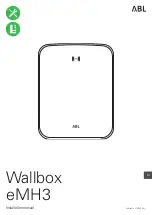
If you exceed the maximum permissible nose-
weight of the trailer drawbar on the ball cou-
pling, the following may become damaged:
R
your vehicle
R
the trailer
R
the ball coupling
R
the trailer tow hitch
The vehicle/trailer combination could
become unstable.
If the noseweight used is lower than the min-
imum permissible noseweight, the vehicle/
trailer combination could also become unsta-
ble.
To avoid hazardous situations:
R
make sure to check the noseweight before
each journey.
R
use a drawbar noseweight as close as pos-
sible to the maximum noseweight.
R
do not exceed the maximum permissible
noseweight.
R
do not use a noseweight lower than the
minimum permissible trailer drawbar nose-
weight.
When reversing the vehicle towards the
trailer, make sure there is nobody between
the trailer and the vehicle.
Couple and uncouple the trailer carefully. If
you do not couple the trailer to the towing
vehicle correctly, the trailer could become
detached.
Make sure that the following values are not
exceeded:
R
the permissible trailer drawbar noseweight
R
the permissible trailer load
R
the permissible rear axle load of the towing
vehicle
R
the maximum permissible gross vehicle
weight of both the towing vehicle and the
trailer
You will find the applicable permissible val-
ues, which must not be exceeded, in the vehi-
cle documents.
You will find the values approved by the man-
ufacturer on the vehicle identification plates
and those for the towing vehicle under "Tech-
nical data" (
When towing a trailer, your vehicle's handling
characteristics will be different in comparison
to when driving without a trailer.
The vehicle/trailer combination:
R
is heavier
R
is restricted in its acceleration and gradi-
ent-climbing capability
R
has an increased braking distance
R
is affected more by strong crosswinds
R
demands more sensitive steering
R
has a larger turning circle
This can impair the vehicle's handling char-
acteristics. Adapt your style of driving accord-
ingly. Maintain a safe distance. Drive care-
fully.
When towing a trailer, always adjust your
speed to the current road and weather con-
ditions. Do not exceed the maximum permis-
sible speed for your vehicle/trailer combina-
tion.
Notes on towing a trailer
General notes
i
When towing a trailer, set the tyre pres-
sure on the rear axle of the towing vehicle
for a maximum load; see the tyre pressure
table in the fuel filler flap (
Please note that when towing a trailer, PARK-
TRONIC (
page 228), Active Parking Assist
page 232) and Blind Spot Assist
page 250) are only available with limita-
tions, or not at all.
i
On vehicles without level control, the
height of the ball coupling will alter accord-
ing to the load placed on the vehicle. If nec-
essary, use a trailer with a height-adjusta-
ble drawbar.
You will find fitting dimensions and loads
under "Technical data" (
260
Towing a trailer
Driving and parking
Summary of Contents for E 180
Page 1: ...E Class Saloon and Estate Owner s Manual Nur für internen Gebrauch For internal use only ...
Page 4: ......
Page 30: ...28 ...
Page 136: ...134 ...
Page 156: ...154 ...
Page 331: ...Useful information 330 Stowage areas 330 Features 348 329 Stowing and features ...
Page 364: ...362 ...
Page 365: ...Useful information 364 Engine compartment 364 Service 370 Care 371 363 Maintenance and care ...
Page 382: ...380 ...
Page 404: ...402 ...
Page 466: ...464 ...
Page 488: ...486 ...
Page 489: ...487 ...
Page 490: ...488 ...
















































